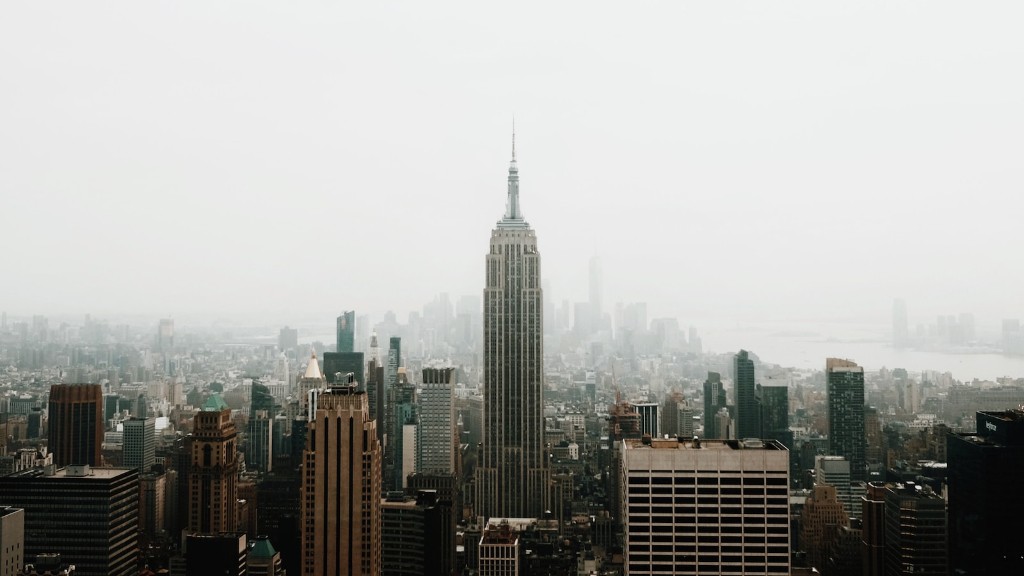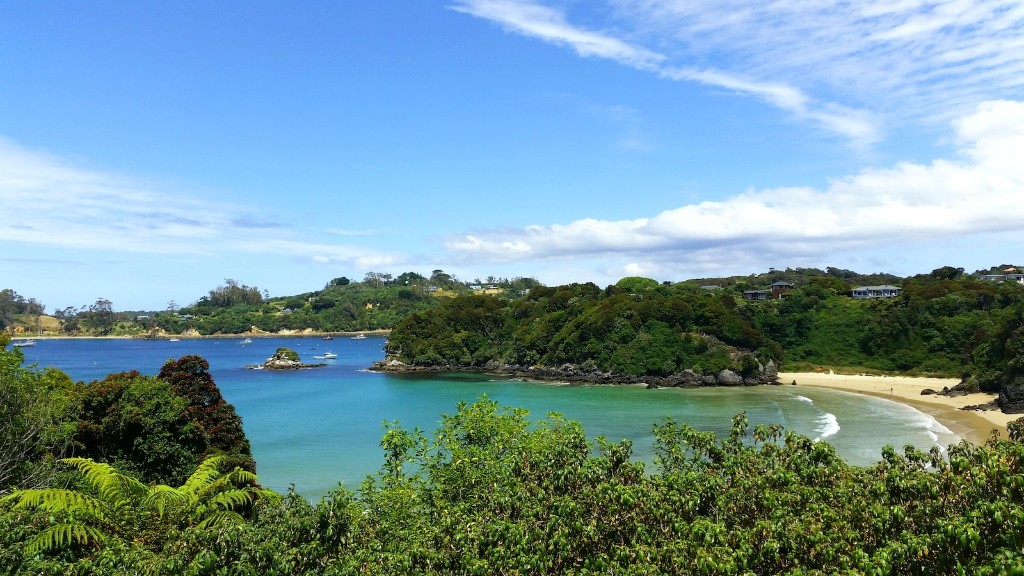Where is New Zealand from the United States?
New Zealand is a small but geographically isolated country located in the southwestern Pacific Ocean, with the entirety of the nation situated roughly 1,000 miles southeast of Australia. It lies more than 8,000 miles from the United States, and is closer to polar regions than it is to the equator. In inhabiting such an isolated location, the islands of New Zealand formulated an idiosyncratic identity, with unique customs, culture, and language.
The islands of New Zealand played a vital role in the early days of global exploration. Portuguese explorer and navigator Fernão de Magalhães, known in the English-speaking world as Ferdinand Magellan, was the first non-indigenous person to pass through the islands, likely in 1520. Later, James Cook, the celebrated British explorer and navigator, took command of the HM Bark Endeavour in 1768 and arrived in New Zealand in 1769, where his expedition proved to be highly influential in mapping out the geography of the islands.
Today, the United States and New Zealand enjoy strong political relations, mutually committing to a wide range of issues such as the free flow of goods and people, security in the South Pacific region, and ensuring the stability and prosperity of the host countries. Aside from politics, the two nations also take part in a variety of sporting events, such as rugby, cricket, and the summer Olympic games. In recent years, the two powers also joined forces in providing relief and humanitarian aid following numerous natural disasters in the Asia-Pacific region.
The main modes of transportation between the US and New Zealand are by air and water. Most air travel between the two nations require an extended stopover in a designated airport, with popular routes such as Los Angeles, Hawaii, and Tahiti servicing the most accessible connecting services. Cruises and freight vessels also offer travelers an alternative to long-haul flights, with cruises departing from ports in the US or Australia and arriving in ports in New Zealand several days later.
When considering travel between New Zealand and the United States, the vast expanse of the Pacific Ocean requires careful planning and considerations. Travelers must be aware of aviation and maritime safety policies, as well as ensuring they have the necessary legal documents for embarking on their voyage. With the help of experienced travel agents, providing detailed itineraries, travelers can take the necessary precautions to ensure safe and seamless passage across the Pacific.
Economic Trade
The United States is the second-largest foreign investor in New Zealand, with over 300 American investments in 2019. The trade volume between the two nations has increased, as shown by the total number of exports from US-affiliated companies to New Zealand rose from $341 million in 2018 to $478 million in 2019. The main products exported to US from New Zealand were pharmacological, medical, and paramedic products, with exports of wine, spirits, and beer experiencing a 20 percent rise in the same period.
The majority of New Zealand’s imports into the United States come from agricultural-based products such as apple juice, dairy products, clover honey, and preserved vegetables produced in the country. Despite this, estimates suggest that the US exports more to New Zealand than it imports, creating an overall trade surplus of $81 million in 2018.
The US-NZ trade agreement, signed in 2019, is anticipated to drive more investments in both the US and New Zealand. The US is looking to expand its market presence in New Zealand, while the latter is seeking better access to the US markets and reduced trade barriers. The agreement has also been praised for its intention to promote job growth in both countries and the increased opportunities that it presents.
The US-New Zealand free trade agreement has thus enabled greater economic cooperation between both nations and has largely been beneficial for both countries. It has increased investment flows between both nations and improved trade conditions to the mutual benefit of the two countries.
Cultural Exchange
Not only does the US-New Zealand trade agreement increase the economic ties between the two countries, but it also boosts cultural understanding between two nations on the opposite sides of the globe. Firstly, cohorts seeking to study abroad from both countries have benefitted from this free trade agreement. Students coming from New Zealand to study in the US have been granted access to job opportunities, allowing them to intern or work part-time after completing their courses of study. Furthermore, students from the US, coming to New Zealand have also been granted access to job opportunities while abroad, increasing their opportunities to find meaningful work in their time abroad.
Beyond the benefits for students, the US-NZ trade agreement has also increased the number of cultural exchange programs administered by both the US and New Zealand. These programs have been beneficial in increasing communication and understanding between both countries, and furthering the educational opportunities for citizens of these two countries.
Lastly, the US and New Zealand have increased their collaboration in promoting entertainment through the medium of film. Films from New Zealand, particularly those of kiwi directors such as Peter Jackson and Fran Walsh, has found tremendous success in the American movie markets, exposing American audiences to an assortment of cultures and stories.
Therefore, the US-New Zealand trade agreement has created greater economic and cultural integration between the two countries and has been beneficial for both nations, more than can be achieved through pleasant relations.
Environmental Cooperation
The US and New Zealand have had a history of collaborating in the environmental sector. New Zealand’s privileged geological location has meant that the US was able to access unique flora and fauna from the country, aiding in the research of various fossil species and other scientific studies.
In recent years, the two nations have also been cooperating on implementing environmental legislation and reducing the carbon footprint in both countries. In 2019, New Zealand signed on to the Climate Change Agreement, along with the US and other members of the UN. This agreement has set out to promote species conservation, reduce environmental stress, and further global environmental management.
The US has also cooperated with New Zealand in marine resources research. Scientists from both countries have been working together, analyzing the genetic, physical, and chemical composition of the marine environment. This research has been beneficial in increasing public awareness on the various issues of marine conservation, protection, and utilization.
In addition, both countries have worked jointly to reduce air and water pollution, which has been beneficial in stemming hazardous materials from entering both nations. This joint effort has been instrumental in fostering a safe and healthy environment, as well as allowing both nations to rely on renewable energy sources, such as solar and wind power.
Therefore, US-New Zealand cooperation in the environmental sector has been immensely beneficial in monitoring and managing endangered species, while also aiming to preserve the environment and conserve resources.
Tourism Industry
The US and New Zealand are highly popular tourist destinations, with the Land of the Long White Cloud drawing visitors from the US and worldwide. The multilingual speaking nation offers travelers an abundance of activities for both island and mountain experiences. New Zealand’s temperate climate also makes it an assortment of destinations to suit any visitor’s preference.
Tourism has been an important part of New Zealand’s economy and a crucial factor in stimulating the job market. According to the US Department of State, an estimated 1.7 million people visited New Zealand in 2019, with the United State being one of the major source countries. The Department expects that number to continue to rise, as Americans seek out new experiences and places to discover.
Tourists from the US have also shown an interest in the country’s culture and customs, leading to the growth of the Learning to See New Zealand Education Program. This program allows New Zealand’s indigenous Maori people to educate participants on their culture, involving tourists in traditional activities and customs. Tourists are also inspired to explore New Zealand’s natural and spiritual environment, and appreciate its scenery.
The US-New Zealand tourism exchange has been beneficial for both countries. It has increased the tourist rates for New Zealand, creating jobs, boosting the economy, and introducing more people to the culture of the country. It has also been beneficial for the US in introducing its tourists to the beauty of New Zealand and exposing them to a unique culture, helping to build connections and mutual understanding between the two countries.
Conclusion
The US and New Zealand have long cooperated in areas of economic trade, cultural exchange, and environmental preservation. With the free trade agreement signed in 2019, both governments are intent in increasing their connection by providing better access to markets, reducing trade barriers, and promoting job growth. Not only is the economic trade mutually beneficial, but the agreement has also allowed for greater understanding between both nations, creating tourism and cultural exchange opportunities that promote growth, understanding, and connection between the two countries.





